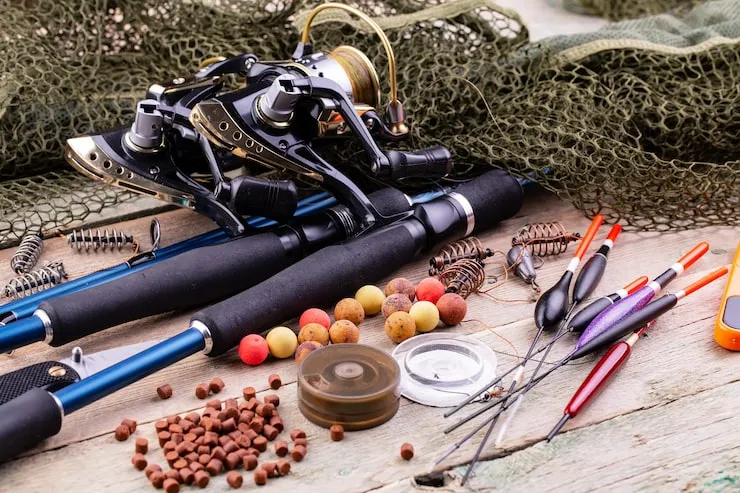Could there be anything better in the bass fishing world than a great topwater, smallmouth bite? When I know the topwater bite is on, I get restless and uneasy on my drive to the boat ramp. And when I do get there and lay my eyes upon a mirrored lake, I can’t get my boat in the water fast enough. And please oh please don’t let there be a wait to launch!
Because I haven’t fished many topwater patterns for smallmouths in their southern range distribution, this discussion applies to my experiences fishing northern, natural lakes. There, I have been on many types of lakes from Minnesota, into Canada, and all the way over to New England.
I consider catching smallies on top one of those “niche” patterns that isn’t always available. It’s not like dropshotting, where bass can be caught under a variety of conditions. Nope, for topwater, a certain set of ingredients need to be in place to make topwater smallies go boom. But when it happens…epic fishing results!
Ingredient #1: Calm seas. This is an obvious one. The disturbance caused by a surface lure is most noticeable on a smooth surface. But note that flat glass is not completely necessary. I’ve caught tons of smallies on top when ripples and minor wave action is present – don’t be afraid! Topwater failure occurs when wave action becomes too turbulent from gusty winds. The bass can’t home in on a lure nearly as well in choppy surface waters. Plus the lure cannot be fished properly.
Ingredient #2: Spring to early fall season. The bass spawn occurs during Spring and fun with aggressive bedded males can be had on top. However, I really like topwaters even more once the bass move off their beds and start grouping. Excellent topwater action can be found until the water cools off in fall. It’s hard to find a good topwater bite when surface water temperatures drop below 60 degrees.
Ingredient #3: Free-swimming fish food. Dominant prey species have a tremendous affect on smallmouth bass behavior. A good topwater lake will have prey species that aren’t afraid to occupy the upper part of the water column. Species might be yellow perch, smelt, alewives, or a shiner of some kind. Fish such as these will venture throughout the water column including near the surface. Smallmouths that target these species often have a tendency to look upwards for their food. Pinning baitfish against the lake’s surface is a very natural behavior in these lakes. These are the type of lakes that can offer dominating topwater action.
On the contrary, on lakes where the prey is mostly bottom dwelling, smallies are more tuned into feeding along the bottom. Lakes supporting massive crayfish populations (like the rusty crayfish) will have smallies that are often searching for food along the bottom. Or likewise, smallies in the the Great Lakes that feed on gobies will also forage along the bottom because gobies are pretty much glued to the lake’s bottom. Although a topwater can have its moments on these types of lakes, these bottom-feeding smallmouths will not offer consistent topwater action like those smallies tuned into feeding upwards.
Ingredient #4: Warming trend. Bring the heat, baby! Smallmouth get really aggressive when a lake’s daily water temperature trends upwards. Several days in a row of successively higher water temperatures will really get the smallies cranked into a frenzy. Expect topwater baits to be crushed with bad intentions over and over! On those cool days/nights when the water temperature drops significantly, the topwater action will suffer badly. Subsurface presentations will be necessary.
Ingredient #5: Low-light. This seems to be important sometimes and other times irrelevant. I’ve lit the light many times under high-noon, sunny skies. However, most of the time low-light (sunrise, sunset, hazy or cloudy skies) fishing is best. The last two hours of the day can be incredible because the lake has had all day to heat up, causing the smallies to smash anything in sight! Warm, humid cloud cover preceded by a couple of hot, sunny days will also prime the system for memorable topwater strikes.
Ingredient #6: The lures. Regarding which topwater to choose, I keep it fairly simple. I’m either going to use a popper, walker, whopper-plopper, or propbait. The belly is either going to be white, orange, mirrored or clear. In some lakes, the fish will want the lure to stay moving so in those lakes I prefer either a walker or the whopper-plopper. When the bass want a lure paused before hitting, then a popper gets strong consideration, although any one of the baits can be paused.
The biggest problem with topwaters is hooking the fish when it strikes. Sometimes they just use their head to ram the lure without really eating it. Other times, they boil underneath or behind the lure. But even when they do actually eat the lure, hooking can still be a problem because their little mouths often don’t get a good grasp on a lure that is larger than their mouth. Experimentation is the best advice I can give here. You might find that a change in size or color yields better hookups. Recently, I was on a lake where a walking bait drew a lot of action but the bass just batted it around or swirled underneath, so less than half of the fish were actually hooked. I then switched to a popper which had a smaller profile, and I started hooking almost all of the strikes. The drawback was that it seemed as though fewer bass were coming for it.
Ingredient #7: Rod/Reel/Line. A 6 ½ foot, medium action, baitcaster carries the bulk of my topwater fishing for smallmouths. I can make long casts and work the baits properly with this setup. It is very important to spool up with monofilament line on these surface baits. This type of line floats whereas fluorocarbon line sinks, and I just don’t like braid (out of habit) in this situation.
Topwater smallies is a niche pattern that requires certain ingredients for success. It takes just about all of them to generate a surface attack free-for-all. Knowing what ingredients are necessary will guide fishermen to some of the most memorable smallmouth catches of the year!















